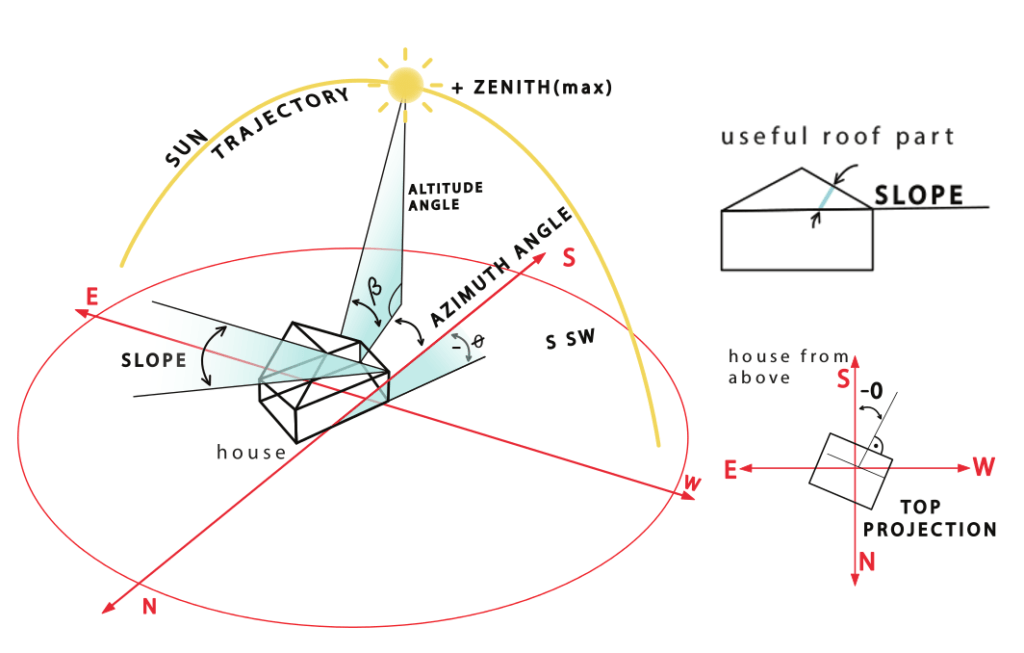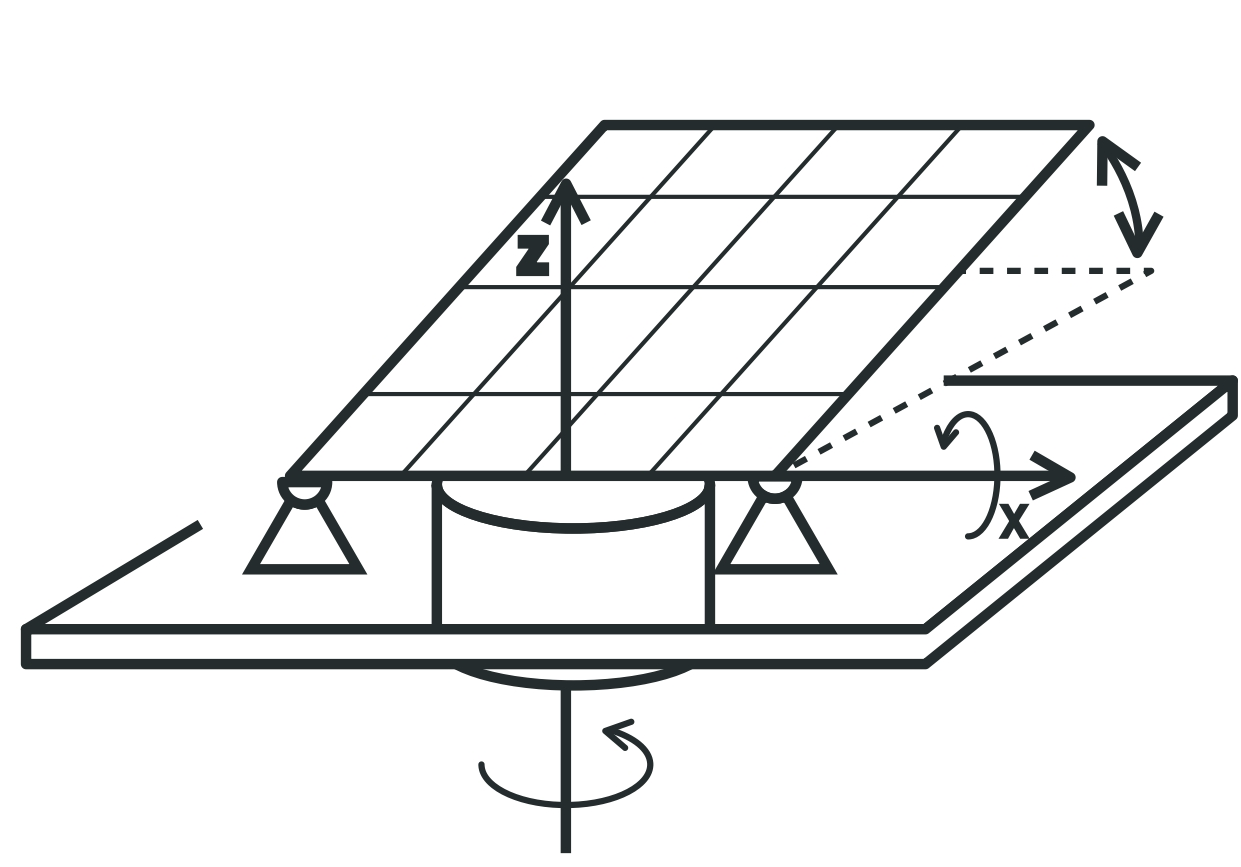Theoretical part. I shall try to briefly explain the terms related to the use of solar energy. First at all lets take look on basic geometry
Latitude
is angular distance or angle between the earth’s equator plane and line from earth center to point of observed position. Or we can say Latitude is angle between line form earth center to observed position and projection of this line on equator plane. It s vary from 0 to 90 deg
Solar declination angle δ
The angle formed between the plane parallel to the equator on observed latitude and the line drawn from the center of the sun is called the solar declension and is signed with the Greek letter sigma δ. Its maximum varies between extremes of ± 23.45 ̊. This angle depends on form a day in year, and could be calculated for every greater city in USA and Europe with solar calculator (table 1 row 1)
Hour angle
The hour angle is the angle that the sun moves by in relation to the local meridian as the world rotates on its axis at a rate of 15 degrees every hour, with the morning being negative and the afternoon being positive. For instance, the hour angle is 22.5° (15° per hour times 1.5 hours before noon) at 10:30 a.m. local apparent time.
Altitude angle βN
is position of the sun in relation to the horizontally placed module (gradient) on altitude L at arbitrary declension δ in solar noon. The angle βN defines the “height” of the sun. We should say on winter sun is low and on summer sun is high.
Tilt or Slope or Pitch
is angle between horizontally plane and solar module plane. Solar panel slope is usually roof pitch where is mounted. optimal angle, the angle of inclination at which the sun’s rays are vertical to the module. Formula for calculation optimal tilt angle is : TILT = 90 – βN. Thi means that in order to make maximum use of thesun’sn radiation,thee angle of inclination should be adjusted every day. This adjustment canincreasee energybyl 10%.A calculatorr canfind thed optimal tilt angle for your tabl. 1 row 3

Azimuth angle - Φ
Azimuth angle Φ ( Greek letter phi) is the angle between the projection of the sun’s ray on the horizontal plane and the solar noon. It is connected to solar angle. During the day, the sun’s rays fall at different angles on the solar module. The angle at which it will fall direct solar radiation on the surface of the module is defined with attitudinal angle βN and azimuth .In then coordinate system,the azimuth angle is positive from east to south and negative from south to east and positive from south to west – in any case, you will get correct results if you make a mistake in the sign.

Orientation from the South + - Ō
It is not important that the side of the roof on which the solar module is mounted faces south, south-southwest, or south-southeast (on the northern hemisphere: North America, Europe, and Asia).
It is important to measure this angle from the axis pointing south. If the orientation of the roof is south-southeast, then the angle is negative (nt) If the orientation of the roof is south-southwest, then the angle is positive (+). But, as mentioned before, signing is not so important. The angle of orientation in absolute value cannot be greater than 90 degrees. -90 degrees panel is faced to east, +90 degrees : panel is faced to west.
Incident angle θ
The most important angle at which the sunlight falls on the solar panel is marked with the Greek letter θ theta or incident angle. The incident angle depends on four factors: the day of the year, the inclination of the solar panel, its orientation to the south, and latitude. This is also the most important angle in the calculations because it figures in the formula for calculating the direct component of solar radiation.

Sun follow panel, two axis tracking
The sun follow panel has a much higher efficiency but also a more complicated tracking system that requires rotation around the vertical axis depending on the time of day—the hour angle. The rest is similar to the one-axis adjustment system. So its adjudications depend on date and time and couldn't be done manually.

